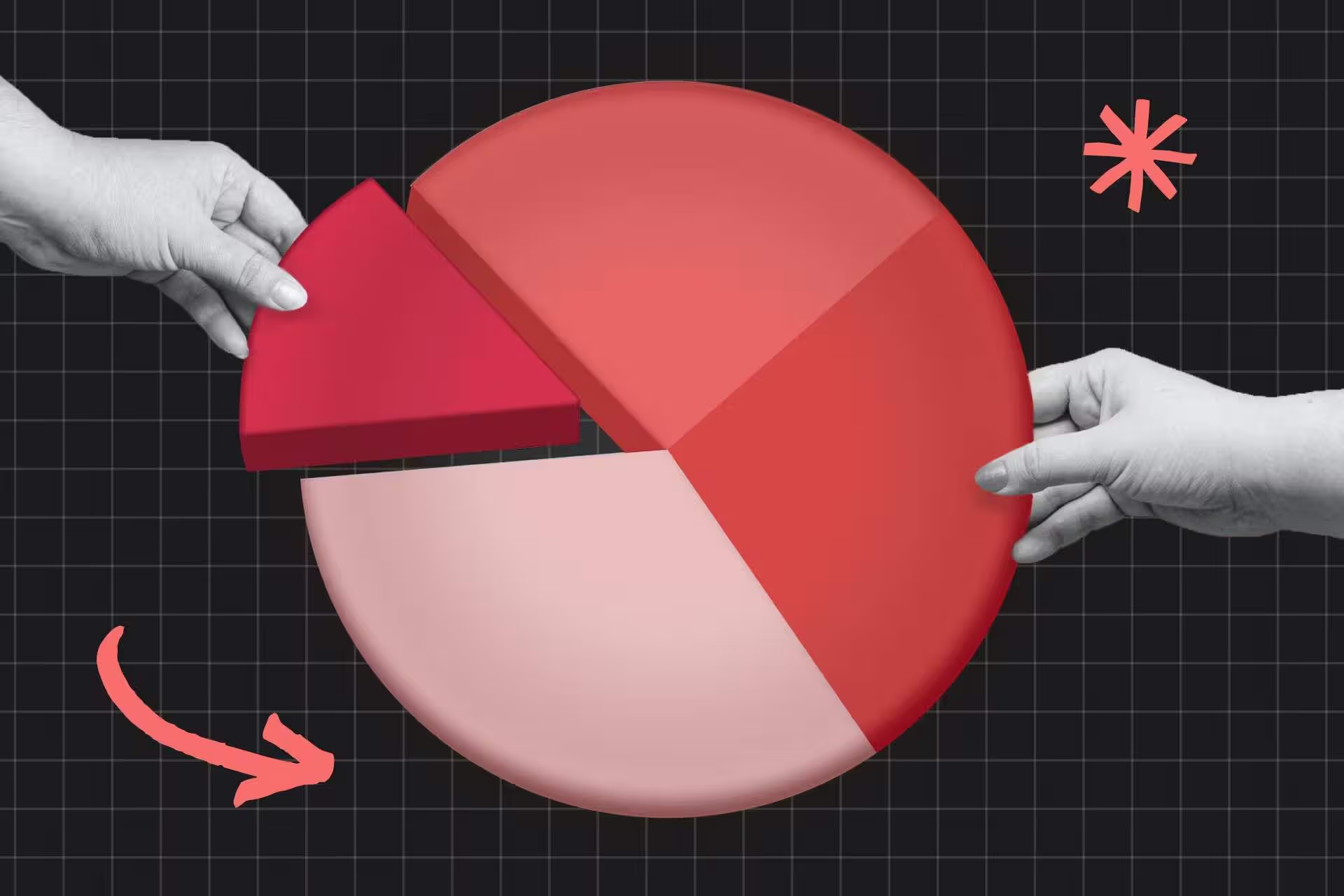The problem statement is an all-important asset to the startup. It forms the core of the business and the reason for it to exist, by laying out the real-world challenge that your business is focused on resolving.
Let’s take an example that will be familiar to us all. Here’s a problem statement for a video conferencing company through the past few years:
“The office cannot open and people are asked to stay in their homes except when they need to leave for absolute essentials like food and healthcare. This means that they cannot work in an office and collaborate as a business like they used to.”
Companies like Zoom, Microsoft (via Teams), and others benefitted from the disruption that was caused by the pandemic. They continue to thrive post-pandemic because the solutions were so adept at addressing the problem statement that the value they added to the employee’s day became intrinsic.
If you can be the first to observe a genuine pain point within the community, and pinpoint the reason that it is a problem, then you’ve got the perfect business pitch. That’s the power—and utility—of a problem statement.
So, what is a problem statement?
A good problem statement is beautiful in its simplicity. It should be a one or two sentence statement that clearly articulates a problem that you—and your business—want to address. Its purpose is to inspire creative thinking but (and this is critical), it is not there to describe the solution.
Getting the order right is important here: How often have you heard the phrase “that was a product looking for a problem to solve” in relation to a failed product release? That typically happens when an entrepreneur thinks they have a great idea, but haven’t thought about what their idea is specifically there for.
A problem statement ensures that the creative energy that is going into the product development is driving towards a particular end-goal, rather than the vague intention on making something of high quality, or something that sells well.
A problem statement is a top-line statement, similar to a mission or vision statement. However, it is different in its focus. A mission or vision statement helps guide the behaviour of the company. Meanwhile, a business might have multiple problem statements and each of those might have one (or more) products developed to become the solution to the statement.
If you approach innovation the right way, the problem statement becomes the standard that the product is judged by. When you’ve got everyone in the team asking “does this address the problem statement?” at each stage of development, then success is much more likely.
The seven questions behind every good problem statement
The irony with simplicity is that it’s the most difficult thing to achieve. Most people would rather write a 10,000-word essay than try to come up with just a few sentences that encapsulates a problem in its entirety.
The best way to go about formulating an effective problem statement is an old-fashioned brainstorming session. Whether you do this yourself or with some co-innovators, sit down and ask yourself these seven questions:
1) What is the problem that needs to be solved?
(People can’t work in their offices for at least a few months, and possibly indefinitely).
2) Why is that a problem?
(If people can’t work, a business isn’t likely to survive for long).
3) Where is the problem observed?
(The office location, or, more accurately, the absence of a previously existing location to do work).
4) Who is impacted?
(Everyone that works in the office, and, by extension, any customer that interacted with those people).
5) When was the problem first observed?
(The day the lockdowns were announced).
6) How is the problem observed?
(Are people in the office? If not, the problem has been observed).
7) How often is the problem observed?
(Massive scale, with just about every business being affected by lockdowns and office closures, globally).
Once you have answers to these seven questions, then you’ll be able to consolidate them down to arrive at the essence of the problem—your problem statement. With that drafted, ask yourself if it contains the following information:
Does it identify a gap (pain point), explain when, where and what that gap is speaking to, quantify the gap in terms of cost, size, quality, and so on, and explain why this gap needs to be filled?
If it has all this information, congratulations—you’ve got the material that you need to clearly draft up your problem statement!
How to write a problem statement
Mechanically, writing a problem statement once you’ve brainstormed your way through the questions above is quite simple:
1. Identify the biggest problem
It is very likely that the brainstorming session has highlighted multiple challenges in need of solutions. The biggest opportunities rest with the biggest problems, so the first task is to highlight which problem you should turn into a problem statement.
2. Spend the first part of the statement being explicit about the source of the pain
Back to our example: “The office cannot open and people are asked to stay in their homes except when they need to leave for absolute essentials like food and healthcare.”
For a problem statement to work, you need to detail the full extent of the “pain” being caused. You could write “people can’t come to work,” but this isn’t specific. There are any number of reasons that people can’t come to work (or simply don’t want to!), so in the example here a good problem statement will specify the exact reason why people can’t come in to work.
3. Make it human
Business ultimately exists in service to humanity, and to craft a compelling problem statement, it needs to relate back to the human experience somehow. “Employees can’t collaborate in the office like they are used to,” makes it clear that people are being prevented from doing something that they want to, and that therefore is a relatable, human problem to be solved.
4. Make it clear that there’s a solution
Lastly, there’s no problem coming up with a problem statement for something that doesn’t have a solution. In our example above, it’s clear that the solution is coming up with a new way to collaborate. Your problem statement shouldn’t describe the solution, but it should highlight that you know there is one.
Finally, make sure you make it brief. Not more than two sentences. You want to capture your audience’s attention and give them something immediately inspiring and motivating. The longer the problem statement the more room there is for interpretation.
Where problem statements can go wrong
There are four common mistakes that can act to undermine a problem statement. We call them “distractions” and their presence within a problem statement can lead a team to create a product or solution that addresses the distraction, rather than the actual core of the problem.
Here are the four main distractions that can negatively impact on a problem statement’s effectiveness:
Symptoms
If the problem statement ends up addressing a symptom, rather than the underlying problem, then the product or service developed out of it will be of limited appeal and utility. To go back to the remote work example, if the problem statement was “people are having trouble collaborating while working from home,” a “solution” might be to give them a webcam, and that’s obviously not going to address the real problem that organizations faced in this.
In other words, we’re talking about first principles thinking here. Being able to answer the question “what is the customer’s fundamental problem?” means that you’ve cut through the superficial symptoms, and key to the success of the problem statement.
Solutions
There are steps between developing the problem statement and actually getting into product or solution development. Jumping those steps and including solutions within the problem statement is a recipe for disaster. The reason for this is simple: a problem statement features a number of assumptions, and until you can test those assumptions you can’t be sure that the solutions that you’re developing will address the actual problem.
Causes
Causes have no place in a problem statement, because again, this is something that is investigated once there is agreement on what the problem is. Take the working from home example that we’ve been using. It would be very easy to say that “COVID-19” is the cause for lockdowns and working from home. However, there was already a trend towards people working from home before COVID-19 first hit the headlines: the cause behind working from home was already there. COVID-19 accelerated it, but if you developed a solution for COVID-19-driven working from home, you may well miss the actual root problem, resulting in an inferior and limited product or solution.
Blame
There’s a close association between “problem” and “blame,” so it’s not unusual for blame to be thrown around during the brainstorming session. The final problem statement, however, should be blame-free, because the implication that comes with blame is that those responsible should be driving the solution.
Or to put it another way: it might be easy to blame management for not having the foresight to enable working from home before the pandemic hit. However, the solution, and the problem, is simply that people need to work from home. Who is responsible for that need is completely irrelevant to the form the solution will take.
To summarize; a problem statement itself needs to be simple, and focused on an underlying problem that currently doesn’t have a solution to users. This is the problem that you will try and solve. That’s it. Nothing more.
Problem Statement Examples
Here are some real-world examples of companies, and the problem statement that underpinned their genesis. You’ll see the common thread across them—they succinctly and clearly describe the problem they’re solving, not the product/solution that they’re selling:
Facebook: “It’s easy to find music, news, and information online, but connecting and interacting with your family and friends is inefficient and cumbersome.”
Stripe: “Ecommerce is dominating, but accepting payments online is difficult and well beyond the means of small businesses in particular.”
Canva: “For marketers and small-business owners, it’s impossible to make attractive graphics for presentations and marketing without first taking courses in professional design software.”
Robinhood: “Young professionals want to build wealth and investments, but trading commissions have placed financial barriers to mass market participation in the stock market.”
Uber: “Finding a taxi when you need it the most can be difficult. You can call and book, but only hope that it will show up on time.”
Square: “Small retailers need to have a way of accepting credit cards, as more and more customers are using cards to make payments. However, payment terminals are expensive and the barrier to entry too much for these businesses.”
Spotify: “Consumers wanted music online and in a digital format, and are willing to pirate them if there isn’t a ‘legitimate’ option to access the music this way.”
Docusign: “Businesses are shifting to paperless offices, however, contracts still need to be signed in a secure and legally-binding way.”
LinkedIn: “All the social media networks are focused on personal identity and social interactions. Business leaders want to separate their personal and social lives from their business/corporate identity.”
Google: “Finding a website that contains authoritative information is difficult as there are a lot of websites, and existing search engines weren’t great at ranking them.
YouTube: “It’s easier than ever to digitize videos and have them on your computer, but to share them you need a platform that is accessible and easy to use.”
Grammarly: “People rely on the spelling and grammar tools in Microsoft Word as an efficient way to proofread their own work. Outside of Word, however, and on social media, they’re on their own.”
Duolingo: “People have an interest in learning a second or third language. However, formal courses might not fit with their timetables and can be expensive, and tapes or audiobooks can be in scope and feedback.”
What is fascinating about all of these startups that have grown to become billion-dollar companies is that their product suites are often big and complex. At the same time, because the problem statement was so well articulated at the business’ inception, the company has been able to maintain its focus on that core capability in the subsequent years.
The Bottom Line
It’s a good idea to get good at identifying opportunities and writing problem statements that address them. If you’re starting up a business, it’s the problem statement that will help guide you in product development and establishing your company’s differentiation.
Likewise, if you’re looking to invest in companies, being able to see a robust and well-formed problem statement is important. A “me too” business, or one that seems to be relying on the unsubstantiated genius of its founder, is unlikely to succeed. An entrepreneur that has successfully identified a problem and gap in the market, and is going to attack that problem with their startup’s products and solutions, is one to get excited about.
Having a problem statement is by no means proof of the future success of the company, but what it does do is show that the company understands where its opportunity lies.












